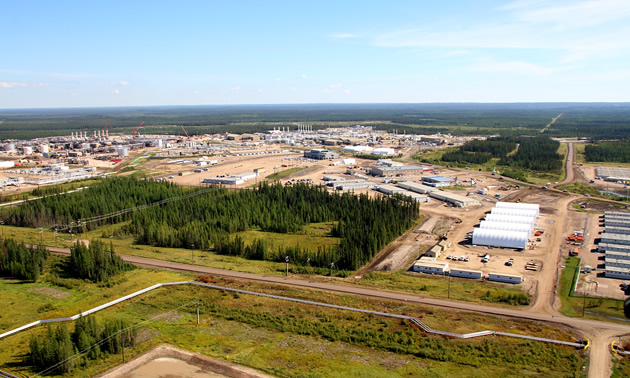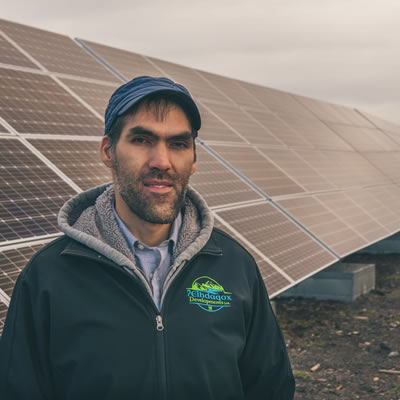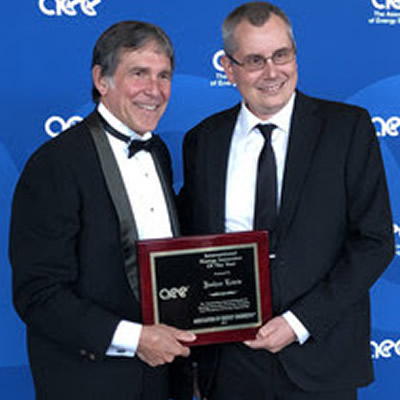Cenovus delivers exceptional third-quarter performance

Located on the Cold Lake Air Weapons Range, about 330 kilometres northeast of Edmonton, our Foster Creek project uses steam-assisted gravity drainage (SAGD) to drill wells, inject steam at a low-pressure and pump oil to the surface. — Photo courtesy Cenovus
Cenovus Energy Inc. (TSX: CVE) (NYSE: CVE) generated more than $700 million of free funds flow and nearly $1 billion in adjusted funds flow in the third quarter, driven by exceptional operating performance in its oil sands and refining and marketing businesses. Oil sands production exceeded 376,000 barrels per day (bbls/d) with record-low operating costs for the second straight quarter. Cenovus’s 50%-owned refineries, operated by Phillips 66, processed record oil volumes for the quarter.
The company also benefited from a year-over-year increase in the price of Western Canadian Select (WCS), even as the price differential between WCS and West Texas Intermediate (WTI) more than doubled. While the wider differential impacted upstream cash generation, it created a feedstock cost advantage for the refining business which contributed strong operating margin. Cash from operations, together with $625 million in proceeds from the sale of Cenovus’s Pipestone Partnership, helped reduce net debt to below $8.0 billion, down about $1.6 billion from the end of the second quarter. Cenovus also signed deals to move significant quantities of oil by rail over the next three years. Due to strong operational performance and efficient use of capital, the company has reduced forecast 2018 capital spending by about $250 million with essentially no change to its production guidance.
Key developments
- Generated cash from operating activities of nearly $1.3 billion, compared with $592 million in the third quarter of 2017
- Achieved free funds flow of more than $700 million, up 30% from the third quarter of 2017
- Reduced oil sands per-unit operating costs to $6.59/bbl, down 13% year over year
- Redeemed US$800 million in unsecured notes on October 29, 2018
- Signed contracts to move up to 100,000 bbls/d of oil by rail, ramping up through 2019
- Received corporate credit rating upgrade from Moody’s to Ba1, stable
Financial highlights In the third quarter of 2018, Cenovus recorded cash from operating activities of nearly $1.3 billion compared with $592 million in the same period a year earlier. The company generated adjusted funds flow of nearly $1 billion, in line with the third quarter of 2017. Adjusted funds flow in the quarter reflected realized risk management losses of $325 million, largely related to Cenovus’s remaining hedging activity, which was significantly reduced at the end of the second quarter. Cenovus had free funds flow of $706 million in the third quarter of 2018, a 30% increase year over year. Benchmark WTI prices increased almost 45% from the third quarter of 2017, while WCS prices increased 23%.
The WTI-WCS price differential widened to an average of US$22.25/bbl in the quarter compared with US$9.94/bbl a year earlier. While the wider differential impacted cash generation from Cenovus’s upstream operations, the lower cost of WCS relative to WTI provided a feedstock cost advantage for the company’s refineries as did the wider price differential between WTI and West Texas Sour (WTS). Refining and Marketing operating margin was very strong in the third quarter, more than doubling to $436 million compared with the same period in 2017.
During the quarter, the company sold the Cenovus Pipestone Partnership in the Deep Basin for cash proceeds of $625 million before closing adjustments. The company realized a non-cash before-tax loss of $795 million on the sale. Including the proceeds of the sale and cash from operations, the company reduced net debt to below $8.0 billion at the end of the third quarter, down from $9.6 billion in the second quarter and $11.5 billion in the third quarter of 2017.
On October 29, 2018, the company used cash on hand to redeem US$800 million of its US$1.3 billion unsecured notes due October 2019. The early redemption is expected to result in net interest savings of US$23 million. Reducing debt through free funds flow and asset sales remains Cenovus’s top priority.
The company continues to target a net debt to adjusted earnings before interest, taxes, depreciation and amortization (EBITDA) ratio of less than two times. “We continue to make excellent progress on the commitments we’ve made to shareholders,” said Alex Pourbaix, Cenovus President & Chief Executive Officer. “In the third quarter, we further reduced our net debt and took a significant step forward in streamlining our Deep Basin business while advancing our market access objectives through strategic rail commitments. We also continued to lower our cost structure, which has substantially improved over the past three years.”
Citing Cenovus’s improving leverage, reduced oil sands cost structure, substantial oil sands production and ability to generate strong annual free cash flow from its assets, Moody’s Investors Service recently upgraded the company’s corporate credit rating to Ba1 from Ba2. Moody’s left the company’s outlook unchanged at stable. Cenovus continues to maintain three investment grade credit ratings with other rating agencies.
Cenovus also made significant progress during the quarter in reducing its long-term fixed real estate costs by subleasing an additional eight floors of The Bow. With a portion of its excess real estate space now under sublease and plans to move staff into Brookfield Place being finalized, Cenovus has reassessed the value of its overall real estate portfolio at current market conditions and has recorded a non-cash expense of $630 million.
Maximizing value Cenovus expects the wide differentials Western Canadian oil producers have been experiencing will begin to ease in the coming months with major North American refineries returning to normal operations following scheduled maintenance, the planned ramp-up of Canadian oil-by-rail activity and the anticipated start-up next year of Enbridge’s Line 3 Replacement project. The company has been positioning itself to generate significant free funds flow as market conditions improve and price differentials return to more historic levels.
In the third quarter of 2018, Cenovus executed three-year deals with major rail companies to transport up to 100,000 bbls/d of heavy crude oil from northern Alberta to various destinations on the U.S. Gulf Coast, where the company has been receiving robust pricing for its oil shipments. The rail agreements involve moving oil with CN from Cenovus’s Bruderheim Energy Terminal, which has already started, and with CP through USD Partners’ terminal in Hardisty, Alberta beginning in the second quarter of next year. Over the past few months, Cenovus has added resources at Bruderheim and increased shipments from the terminal and expects to continue ramping up its rail loading operations and railcar capacity through the end of 2019. In addition to its rail agreements, Cenovus has firm capacity to the West Coast of 11,500 bbls/d on the existing Trans Mountain pipeline and 75,000 bbls/d of capacity to the U.S. Gulf Coast on the Flanagan South system.
The company also has committed capacity on the proposed Keystone XL pipeline project and the Trans Mountain Expansion Project of 175,000 bbls/d combined, and Cenovus will consider adding committed capacity on future pipeline projects over time. “With our rail contracts, pipeline commitments and existing refining capacity, our long-term market access position is strong,” said Pourbaix. “In the short term, as takeaway capacity out of Alberta remains constrained, Canadian producers will continue to be disproportionately exposed to WCS pricing. To further mitigate the impact of wider differentials and improve long-term shareholder value, we’re taking action on a number of fronts to optimize the margin on every barrel of oil we produce.”
Through its 50% ownership in the Wood River and Borger refineries, the company gains a feedstock cost advantage when WCS prices are relatively low compared with WTI. This reduces Cenovus’s exposure to crude oil price differentials. In the near-term, including its refining capacity, existing pipeline commitments and plans to ramp-up crude-by-rail loading capacity to 100,000 bbls/d, approximately 55% to 60% of Cenovus’s blended heavy oil volumes can be partially mitigated against wider differentials. Cenovus also has the ability to respond to widening differentials and the current environment for Canadian producers by strategically slowing production at Foster Creek and Christina Lake.
The company is currently operating both facilities at reduced volumes and is managing production levels to avoid any impacts to its reservoirs. Cenovus will continue to monitor the Canadian price environment and adjust its oil sands production accordingly. The company expects oil sands production for the full year to be within guidance between 364,000 bbls/d and 382,000 bbls/d. In addition, Cenovus is actively assessing other avenues of production management to increase shareholder value, including exploring a variety of additional low-cost storage options for its oil.
Operations highlights Oil sands Cenovus’s oil sands facilities continued to demonstrate excellent operational performance in the third quarter, with total oil sands production increasing 4% compared with 2017. Cenovus’s Foster Creek project had production of 163,939 bbls/d in the third quarter, a 6% increase compared with the same quarter of 2017, while production at Christina Lake was 212,733 bbls/d, up 2% from the previous year. 4 At Foster Creek, the steam to oil ratio (SOR), the amount of steam needed to produce one barrel of oil, was 2.7 in the third quarter of 2018, compared with 2.5 in the same period of 2017. At Christina Lake, the SOR was 1.8 in the third quarter of 2018, in line with a year earlier. The company expects SORs to remain within full-year guidance of 2.6 to 3.0 at Foster Creek and 1.8 to 2.2 at Christina Lake in 2018.
For the second consecutive quarter, the company had record-low per-barrel oil sands operating costs. Combined oil sands operating costs were $6.59/bbl, down 13% from $7.58/bbl in the third quarter of 2017. At Foster Creek, non-fuel operating expenses decreased to $5.88/bbl from $7.43/bbl in the third quarter of 2017, primarily due to higher sales volumes, a reduction in workforce costs and fewer workovers, partially offset by higher chemical costs. At Christina Lake, non-fuel operating expenses increased slightly to $4.42/bbl from $4.30/bbl in the same period a year ago due to higher chemical costs, partially offset by lower workforce costs and reduced workovers.
Field construction of Christina Lake phase G, which has approved capacity of 50,000 bbls/d, continues on schedule and is expected to begin production in the second half of 2019. Continuing to benefit from its capital discipline and improved cost structure, Cenovus anticipates go-forward capital costs, from the time the project was restarted last year through to completion, of between $13,000 and $14,000 per barrel of capacity, 21% lower than the company’s original cost estimates.
Cenovus’s Christina Lake project achieved a significant milestone in the quarter, reaching payout for royalty purposes in August 2018 as cumulative revenues from the project surpassed cumulative allowable costs. Royalties at Christina Lake now follow the post-payout formula described in Cenovus’s Management’s Discussion and Analysis for the period ended September 30, 2018. The company’s revised royalty forecast for the year is reflected in its updated Guidance document dated October 30, 2018.
Deep Basin Total production in the Deep Basin for the quarter averaged 118,920 barrels of oil equivalent per day (BOE/d), a 3% increase from the same quarter a year earlier and down 8% compared with the second quarter of 2018 due, in part, to the divestiture of the Cenovus Pipestone Partnership. The Deep Basin assets generated operating margin of $73 million in the third quarter compared with $64 million in the same period of 2017. During the quarter, Cenovus completed four net wells and tied in two net wells. Cenovus’s 2018 drilling program in the Deep Basin was largely completed in the first half of the year, and results have been in line or better than expected. Cenovus intends to further focus its portfolio and reduce debt by divesting more of its Deep Basin assets.
The company is continuing to advance confidential divestiture processes. Refining and Marketing Cenovus’s Wood River and Borger refineries, which are jointly owned with Phillips 66, continue to demonstrate excellent operational performance. Combined, the refineries processed a record 492,000 gross bbls/d of crude oil, compared with 462,000 bbls/d a year earlier, and produced 518,000 gross bbls/d of refined products, compared with 490,000 bbls/d in the third quarter of 2017. Refining and Marketing operating margin more than doubled to $436 million compared with $211 million in the same period a year earlier.
The increase was largely due to lower feedstock costs driven by wider price differentials between WTI and WCS as well as WTI and WTS, reduced costs for renewable identification numbers and very high utilization. 5
Cenovus’s refining operating margin is calculated on a first-in, first-out (FIFO) inventory accounting basis. Using the last-in, first-out (LIFO) accounting method employed by most U.S. refiners, the operating margin from Refining and Marketing would have been $15 million lower in the third quarter of 2018, compared with $9 million lower in the third quarter of 2017.
Forward looking statements apply to the press release.




